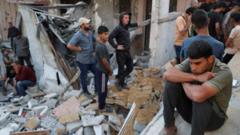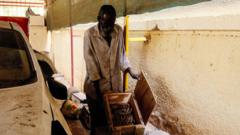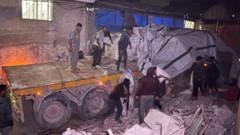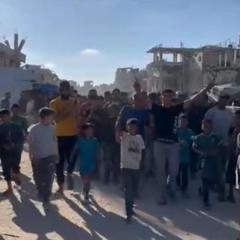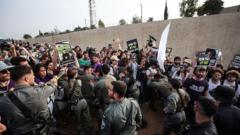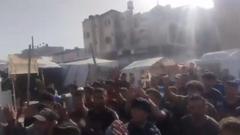In Gaza, a meager influx of aid has caused desperate residents to clash over food, leading to incidents of armed robbery and confrontation with security forces. With the humanitarian crisis worsening, local calls for more effective food distribution methods echo as authorities grapple with rising tensions and chaos.
Chaos Erupts in Gaza Amid Aid Shortages and Security Fears
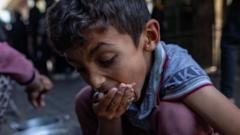
Chaos Erupts in Gaza Amid Aid Shortages and Security Fears
As a partial lifting of the Israeli blockade allows minimal food supplies into Gaza, the resulting desperation leads to violent clashes and chaos among civilians.
In a scene that highlights the dire humanitarian crisis in Gaza, the lifting of a limited part of the Israeli blockade has led to chaotic distributions of food, overwhelming bakeries and leading to confrontations between armed looters and security forces. The violence reached a critical point when unidentified gunmen attacked an aid convoy, resulting in a firefight with Hamas security officers, which drew the attention of Israeli drones that subsequently targeted the Hamas unit, resulting in casualties.
Eyewitness accounts detail that a convoy of 20 trucks, coordinated by the World Food Programme (WFP) and carrying essential supplies, was ambushed, reflecting the escalating lawlessness and lack of governance in the region. Hamas condemned the Israeli drone strike as a "horrific massacre," arguing that personnel assigned to protect humanitarian aid were deliberately targeted.
Despite a recent easing of the border blockade that allowed approximately 130 trucks to deliver aid over a few days, humanitarian organizations insist that this number is drastically insufficient compared to the estimated requirement of 500 to 600 trucks daily. The UN has emphasized that the growing insecurity hampers efforts to deliver desperately needed food and medical assistance amidst a sea of displaced individuals.
Frustration among the Gazan populace is palpable, as many residents expressed dissatisfaction with current food distribution methods, calling for flour to be handed out directly to families instead of relying solely on baked goods. This shift is seen as a safer option, allowing families to cook in their homes rather than congregate in overcrowded distribution centers.
As hunger grows, reports of aid theft have intensified, with the WFP noting that 15 of its trucks were looted overnight. These incidents reflect an escalating sense of desperation fueled by inadequate supplies and dwindling resources. Local residents reported conditions that have become increasingly unbearable, highlighting the inadequacy of the recent aid influx compared to the overwhelming needs of the 2.1 million people living in Gaza.
Amid these challenges, critical voices stem from humanitarian organizations like UNRWA, which describe the situation in Gaza as a rapidly worsening crisis. With women and children reporting malnutrition and inadequate medical care, the urgent call for enhanced humanitarian assistance echoes through the chaotic landscape.

